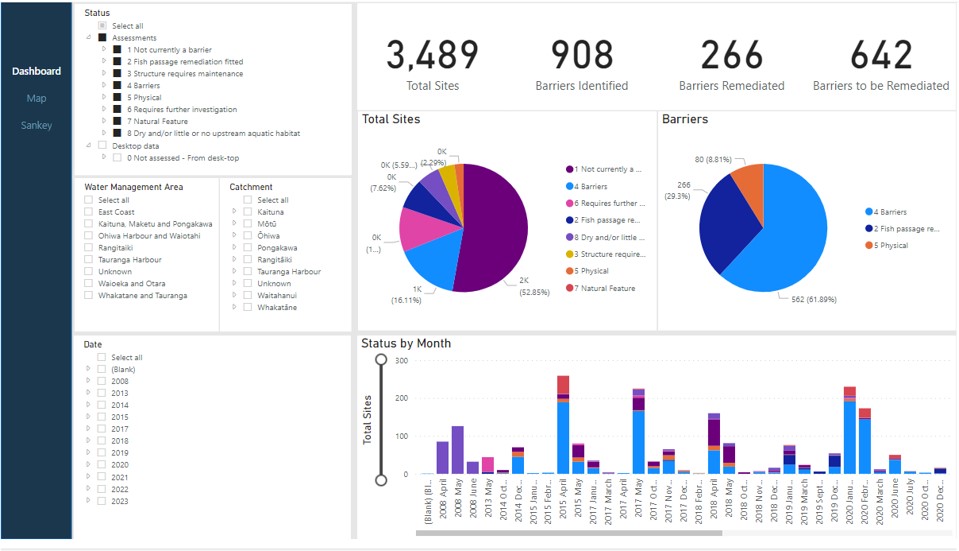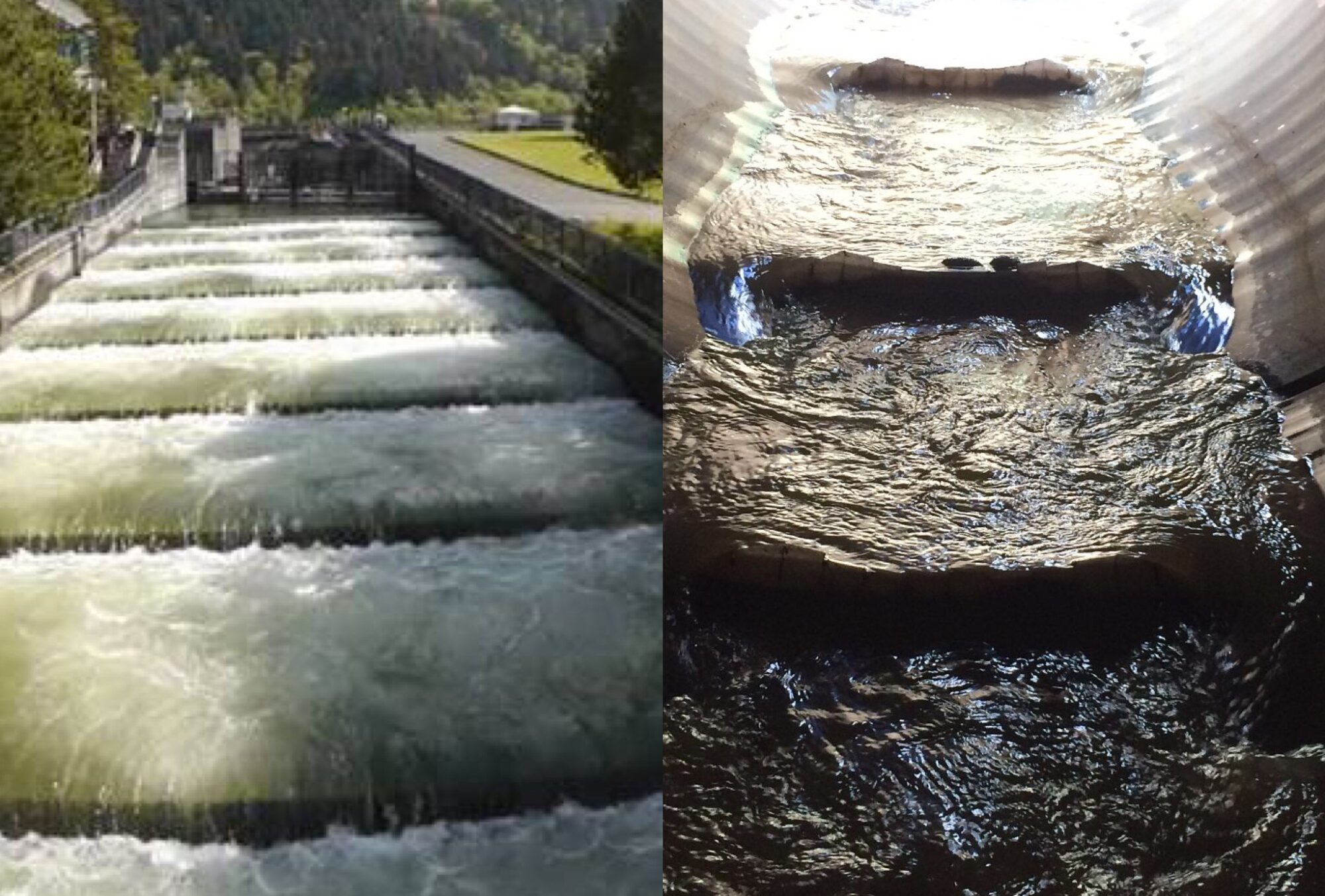We have designed a comprehensive Fish Passage Barrier Assessment and Prioritization program aimed at effectively overseeing and prioritizing mitigation measures concerning culverts and various other fish passage and aquatic organism passage (AOP) barriers. This program consists of two integral components: a field assessment program and a fish passage barrier management database. By integrating these two components, it becomes possible to create and administer a watershed-level fish passage barrier mitigation initiative.
Part 1. Fish Passage Barrier Field Assessment
The field assessment program comprises a field application designed for the collection of data pertaining to structures and waterways that might impede the movement of fish or other aquatic organisms. Our mobile phone and tablet-based application is employed by field investigators to pinpoint, identify, and characterize these barriers. Subsequently, this data is uploaded to a cloud server for integration into the Structures Management Database.
Each client receives a customized Structures Management Database that pertains to their specific area of interest. Existing inventories of fish passage barriers can be seamlessly integrated into this database. As new barriers are identified or mitigation measures are executed, pertinent information is added to the database, ensuring that real-time status updates for fish passage barriers are available. The following is an illustration of the desktop display of the Structures Management Database.
Fish Passage Assessment and Prioritization Database Desktop Display

Part 2. Fish Passage Barrier Prioritization
Once passage barriers are integrated into the Structures Management Database, they become sortable into various categories. These categories can subsequently undergo prioritization for future mitigation efforts. If a client requires the sorting of barriers based on specific criteria such as geographic location, target species, habitat type, or life stage, a dedicated algorithm is devised for that particular category. For instance, an algorithm could be formulated to identify all barriers within the anadromous zone of a specific watershed for a particular species, taking into account factors such as the amount of spawning habitat situated above each barrier. This process yields a catalog of projects that can be further ranked to determine specific mitigation actions.
The resulting prioritized list of projects serves as the foundation for the formulation of mitigation plans, complete with schedules and estimates for required materials and labor costs. After the execution of mitigation measures, the outcomes are documented within the Structures Management Database. As a result, users gain the capability to generate real-time reports detailing the current status and ongoing mitigation endeavors concerning these barriers.
For a brief description of the Fish Passage Barrier Assessment and Prioritization please click on this video.
Site Specific Versus Watershed Scale Fish Passage Remediation
In North America, the matter of fish passage and aquatic organism passage (AOP) barriers is currently dealt with on an individual project basis. Typically, a list of projects is compiled, and funding for corrective measures is allocated through a competitive process. Unfortunately, this approach frequently leads to the development of a fragmented network of habitat connectivity. By implementing an effective prioritization program, asset owners can strategically plan and schedule the remediation of fish passage barriers within entire watersheds, aligning with the availability of resources.
Here is a short video on how one such watershed scale fish barrier mitigation program in New Zealand.

